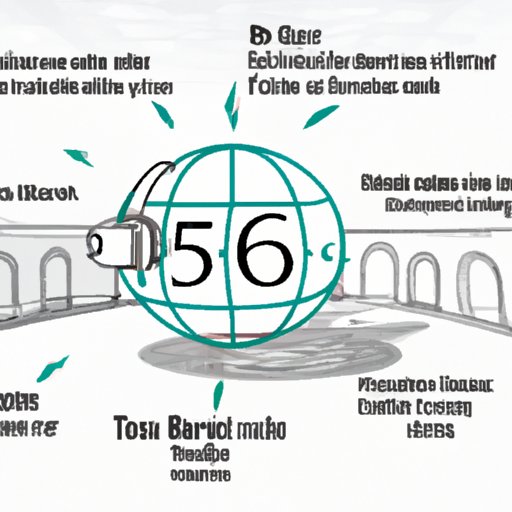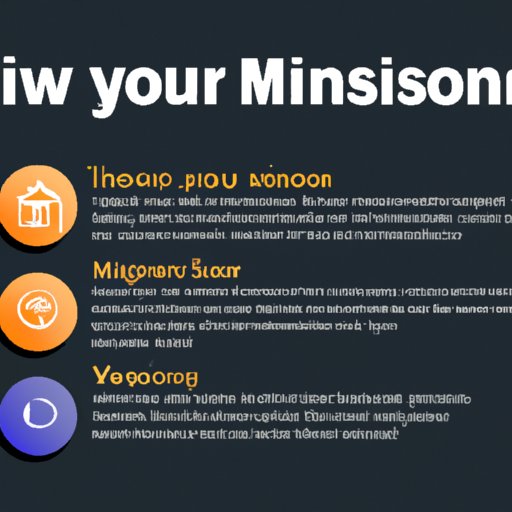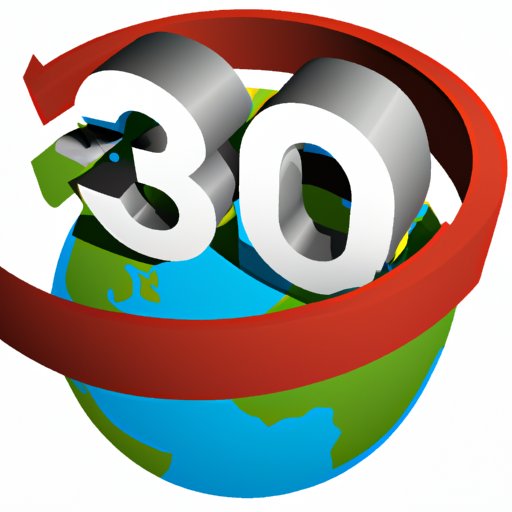Introduction
A 360 virtual tour is an immersive experience that allows users to explore a location or space without actually being there. It can be used to showcase real estate, businesses, museums, art galleries, restaurants, and more. By taking advantage of digital technology, 360 virtual tours offer a unique way to engage with customers and provide them with a realistic view of the space.
Definition of a 360 Virtual Tour
A 360 virtual tour is a computer-generated simulation of a physical environment that can be explored online through a web browser. It provides an interactive experience by allowing users to look around, zoom in and out, and move through the space as if they were actually there. It also gives viewers the ability to click on certain areas to learn more about the space or to access additional information.

Outline the Benefits of a 360 Virtual Tour
A 360 virtual tour offers many benefits to businesses and organizations. It helps to create an engaging and immersive experience for visitors, providing them with a realistic view of the space. Furthermore, it can be used to showcase properties, giving potential buyers an opportunity to get a better idea of what the space looks like before making a decision. Additionally, it can help to increase website traffic and improve search engine rankings.
Necessary Equipment and Software
In order to create a 360 virtual tour, you will need certain pieces of equipment and software. The type of equipment and software required will depend on the size and complexity of the project.
Types of Cameras
The most common type of camera used to create a 360 virtual tour is a DSLR (digital single lens reflex) camera. These cameras are capable of capturing high-quality images, which are then stitched together to create the panoramic effect. Other types of cameras such as action cameras and smartphones can also be used to create a 360 virtual tour.
Image Stitching Software
In order to stitch the individual images together, you will need image stitching software. This type of software is used to combine multiple photos into a single panoramic image. There are several different software programs available, including Autopano Giga, PTGui Pro, and Kolor Autopano.
Other Necessary Equipment and Software
In addition to the camera and image stitching software, there are other pieces of equipment and software that may be required depending on the project. This may include a tripod, lighting equipment, editing software, and a hosting platform. Additionally, you may need to purchase a license for the image stitching software.
Step-by-Step Instructions for Setting Up a 360 Virtual Tour
Once you have all the necessary equipment and software, you can begin the process of creating a 360 virtual tour. Here is a step-by-step guide on how to do this.
Setting Up the Camera
The first step is to set up the camera. You will need to adjust the settings such as aperture, shutter speed, and ISO to ensure that you are getting the best possible images. Additionally, you should mount the camera on a tripod or other stable surface to keep it from moving while taking the photos.
Capturing Quality Images
Once the camera is set up, you can begin taking photos. It is important to take multiple shots of the same scene from different angles in order to capture a complete view of the space. Additionally, you should use a wide angle lens in order to capture as much of the space as possible.
Uploading the Images
Once the photos have been taken, they need to be uploaded to the image stitching software. Depending on the program, this may involve drag and drop or a manual upload process.
Stitching the Images Together
Once the images have been uploaded, the image stitching software can be used to stitch the photos together into a seamless panoramic image. This process involves aligning the images, blending them together, and correcting any distortions.
Creating a Smooth Navigation Experience
Once the images have been stitched together, the next step is to create a smooth navigation experience. This involves adding hotspots, labels, and descriptions to the tour. Additionally, audio and video can be added to further enhance the user experience.
Best Practices for Capturing Quality Images
In order to create a high-quality 360 virtual tour, it is important to use the right techniques when capturing the images. Here are some best practices for achieving the best possible results.
Lighting
Lighting plays an important role in creating a high-quality 360 virtual tour. Natural light is best, but if you need to use artificial light, make sure to use a soft, diffused light source to avoid harsh shadows.
Camera Settings
It is important to adjust the camera settings to get the best possible images. You will want to use a low ISO and a fast shutter speed to minimize noise and blur. Additionally, you should avoid using a flash as this can cause overexposure.
Positioning the Camera
The position of the camera is also important when creating a 360 virtual tour. You will want to position the camera at the center of the space and use a wide angle lens to capture as much of the space as possible. Additionally, you should make sure that the camera is level and that the horizon line is straight.

How to Create a Smooth Navigation Experience
Once the images have been stitched together, the next step is to create a smooth navigation experience. Here are some tips for doing this.
Creating Hotspots
Hotspots are points within the 360 virtual tour that link to additional information or external websites. They can be used to provide more information about a particular area or feature of the space. To create hotspots, you will need to mark the desired locations in the tour and add the appropriate links.
Adding Labels and Descriptions
Adding labels and descriptions to the tour can help to guide viewers and give them a better understanding of the space. You can use text, graphics, and audio to provide information about the space and its features.
Adding Audio and Video
Adding audio and video to the tour can help to further engage viewers and provide them with a more immersive experience. This can be done by uploading pre-recorded audio or video files, or by recording audio or video directly within the tour.

Tips for Optimizing the Tour for Search Engines
In order to ensure that your 360 virtual tour is visible to search engines, it is important to optimize it for SEO (search engine optimization). Here are some tips for doing this.
Keyword Research
Before you begin optimizing the tour for SEO, it is important to do keyword research. This involves identifying relevant keywords and phrases that people are likely to use when searching for your business or organization. Once you have identified the keywords and phrases, you can use them throughout the tour to improve your rankings.
Optimizing Page Titles
The page titles of the tour should be optimized for the keywords that you have identified. This means that each page title should include the relevant keyword or phrase so that search engines can easily identify the content of the page.
Adding Structured Data
Adding structured data to the tour can help search engines understand the content of the tour and improve its visibility. Structured data is a type of code that can be used to provide additional information about the tour, such as its location, images, and descriptions.
Conclusion
Creating a 360 virtual tour is a great way to engage with customers and provide them with an immersive experience. However, it is important to use the right equipment and software and to follow the best practices for capturing quality images. Additionally, it is important to create a smooth navigation experience and optimize the tour for search engines in order to ensure visibility and improve rankings.
(Note: Is this article not meeting your expectations? Do you have knowledge or insights to share? Unlock new opportunities and expand your reach by joining our authors team. Click Registration to join us and share your expertise with our readers.)
